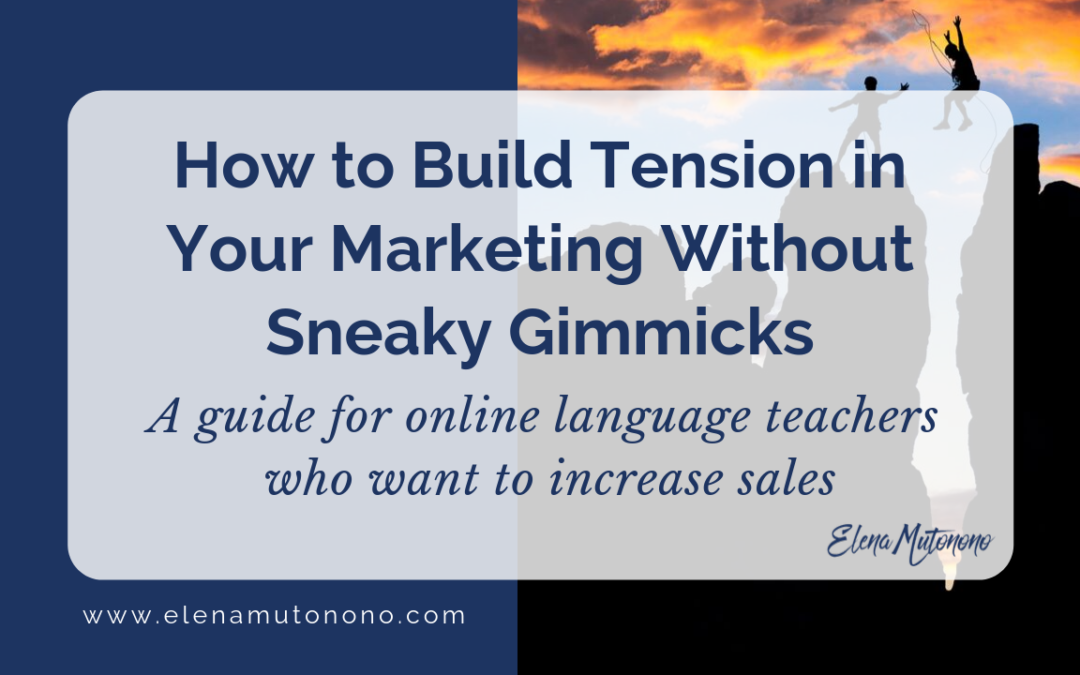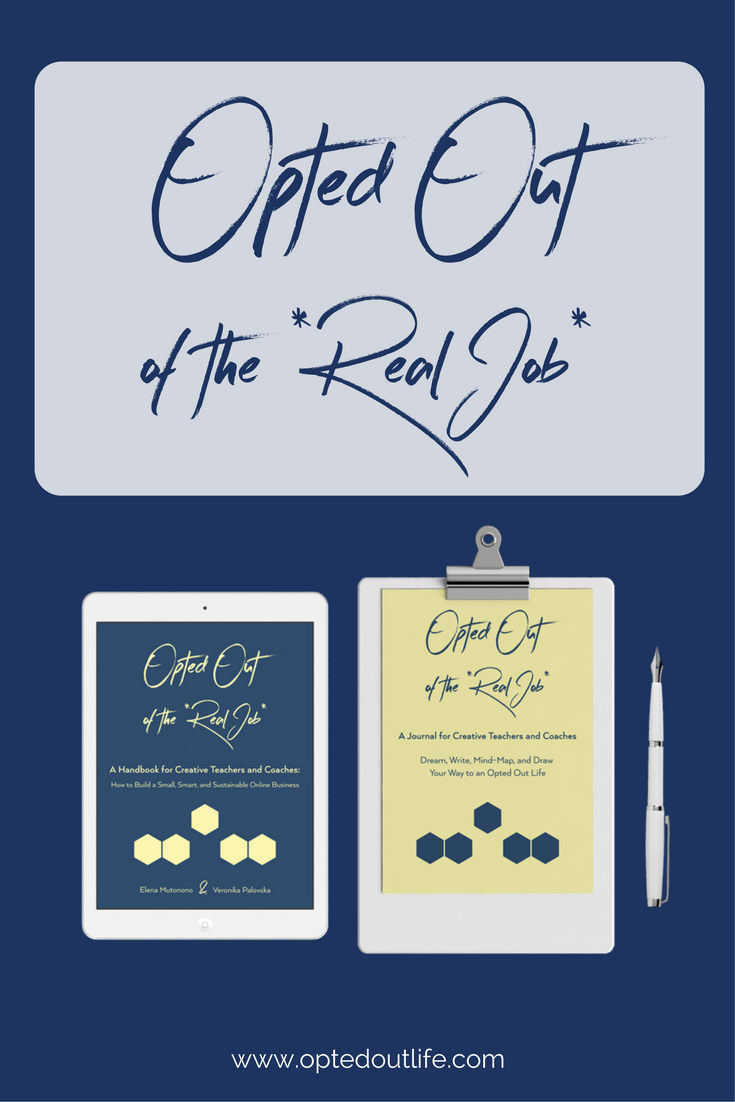Tension is everywhere. It’s what keeps you turning pages when you read your favorite book. It forces you to binge-watch that endless Netflix show even though tomorrow you have to get to work early (Downton Abbey, anyone?). It’s what builds (or destroys) your relationships.
Tension is also critical in business if we want to make change happen, to facilitate transformation and to move people from passive followers to rave fans.
The problem is, there are different ways to build tension when you market your services or products and not all of them align with our values or respect the buyer’s freedom. In fact, any tension-building mechanism that is fast and easy and invades your client’s freedom uses pressure, shame and fear. It appeals to one’s primitive instincts and that’s why it’s effective.
Despite their effectiveness they may not bide well with us as business owners and our clients as well.
If you’ve wondered how it’s possible to move your audience to action and encourage them to buy from you without using icky tactics, this post is for you.
First, let’s explore what I mean by gimmicks and shame-driven tension builders.
Whether you’re launching an online course or inviting people to buy lessons from you, tension is necessary to encourage people to make that leap. There’s always a percentage of people that don’t need much encouragement. They’re already engaged and sold, and they’re your biggest fans.
But that percentage is tiny. The majority needs more time to think through their options and make their conscious decision. This is when tension is critical to move these people to action, but not all tension is created equal.
Not all tension is created equal. Learn to build tension when you market your services as an online teacher using these feel-good guidelines.Click To Tweet
Here are a few popular tension-builders that they use disrespect and pressure:
#1. Fake timers that say you only have this much time before the deal runs out. But when you open the same site in a different browser (or on a different computer) the timer shows a different time.
#2. Shame-driven copy that throws phrases like, “Do you always want to be poor and stupid?” “Don’t you care enough to build your business?”
#3. Fear-driven copy: “If you don’t sign up today you will never….” “This is going to get worse if….” “You will continue having more problems until you join this course….”
#4. Hoarding. Offering too many bonuses just to get people to buy. On the surface it’s a great thing but in reality if people are forced to buy based on their hoarding instincts, how much transformation is going to take place?
#5. Price-slashing: “The actual price is $1,000 but today (only) you’ll get it for $99.”
I’ll repeat that these strategies are effective. If they weren’t, people wouldn’t be using them or teaching you to use them. They work and they bring money into your account. The question is, are they sustainable and how will they make you and your client feel in the end?
Do you feel good when shame and fear is used on you to force you to do something you’re not sure about? Many teachers tell me, “But the gurus say it works, so maybe we should use it when we sell our courses, too.”
If you are the one who cares, maybe you should try something different.
“… While someone can attempt to shame you, shame must also be accepted to be effective. We can’t make you feel shame without your participation.” Seth Godin
***
Ready to build healthy tension when you launch your next product or service? Check out my mini-course:
So how do you build tension in a healthy way?
To build tension you have to be clear on your core message of change and learn to tell a story that resonates with where your readers are at the moment and where they want to be in the future.
When you tell this story with creativity and empathy, consistently showing up and engaging with your audience, you will see the story making a change. It will move people from some amorphous state of doubt, fear and inaction to making a decisive step of faith.
Here are a few more things to keep in mind:
#1. True tension takes time. You can’t close and open your eyes to see your 5-month-old turn into an 18-year-old (although it sure feels that way sometimes). Rushing the process will cost you.
#2. You need to build connections with individuals, not speak and “convert” masses. Robert Louis Stevenson said, “Don’t judge each day by the harvest you reap, but by the seeds that you plant.” Help one person, not masses. These connections will transform your work and add up to great results.
#3. Generosity builds loyalty. When people buy under pressure they don’t care about your work or your values. They may not align with what you do; what they care about is SALE. When you woo people with generosity, they will change their shopping habits and will set an intention to work with you, and eventually they will buy your courses and products.
#4. Tension is built when your final goal is not just “more money.” If your final goal is simply more sales then it’s hard to build tension in a healthy way. Choose a different goal that focuses on internal transformation and show up daily or weekly to inspire your community towards this change.
#5. Tension is built through storytelling (not information). It’s a hard one for teachers who, like Elfin Waters wrote in her recent post, “… are so taken up with teaching all the time. They forget to sell the most important thing: the dream.” It’s easy and safe to talk phrasal verbs. It’s harder and more adventurous to sell the dream.
#6. Create scarcity using human strategies. Because humans tend to “wait and see” there is nothing wrong with using timers, limited spots and reminders. But they need to be real, not fake.
Finally, the way I enjoy selling is by not selling. That is, I talk less about the product, but try to focus more on the result, the dream and the end goal that my ideal client has. Using the tools available to me (social media, email, and free workshops) I speak about the change my readers want to see in their lives and the transformation they long for.
Ideas are powerful. Unlike information about phrasal verbs or Grammar rules, you cannot “unthink” ideas. Once a transformative idea lands in your client’s brain, they are no longer the same.
After that, I lean into creativity and tell the story of the dream over and over again. Until the time is right to take action. Until I launch a product, a service or open enrollment into our community.
What are your thoughts on this? How do you create tension in your online work?
The post was updated in April, 2021.



 Welcome to my nook where *Big Magic* happens. My name is Elena Mutonono, I help small business owners package their services as digital products and sell them online. I want you to work smarter, not harder. Increase your impact beyond your current face-to-face clients. Grow your business as you reach more people all over the world.
Welcome to my nook where *Big Magic* happens. My name is Elena Mutonono, I help small business owners package their services as digital products and sell them online. I want you to work smarter, not harder. Increase your impact beyond your current face-to-face clients. Grow your business as you reach more people all over the world.








It appeals to me so much, Elena!
I have read tons of things “gurus” say to us about marketing. I was watching other people’s accounts and tried to copy what they do to attract clients and it never worked for me. And I felt it wasn’t right.
It’s not me, pushing people to do something, forcing them to work with me. Of course, money is important, but what’s more important is how their lives change for the better after my advice or my help.
About a year ago I was begging people to leave some comments below my posts on Instagram. I was creating “the correct” content plan and followed it. Some time ago I let it go. I stopped writing what I needed to. I started writing what I wanted to share at that exact moment. I started writing from my heart. And my audience heard me and they started speaking to me )) and none of my posts stays without comments now.
I am so happy to meet people like you who are a good example for me. You show me I don’t have to behave in this or that way, I can be myself.
You are doing great job, Elena! Thank you so much! I am really happy I’ve met you!
Vera, thanks for leaving this comment. I’m sure it’s going to be helpful to others who are just starting out, getting lost in all the popular advice and wondering if they can ever gain any traction. Before sharing from your heart I think you need to know what’s in your heart, which is hard to hear when all you do is follow instructions. But once you do listen to yourself, you can let everything else go and release your own voice! Thank you for your sharing your experience as well!
This is a REALLY great post. I don’t see this discussed much, except maybe by Seth Godin. Thanks for sharing!